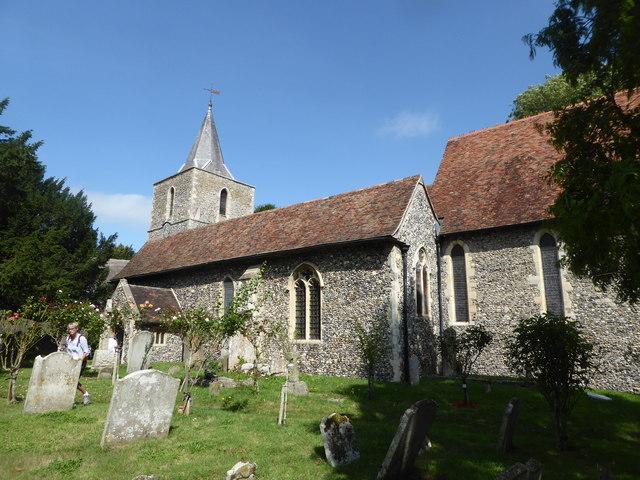St John the Evangelist
Ickham, Kent
With a handsome broach spire and walls of flint, stone and brick, St John's is set in a large and attractive churchyard.

Set in a large and leafy churchyard, this attractive flint built church dates from the 13th century, thought to be founded by the monks of St Augustines' Abbey in Canterbury who may have used Littlebourne as a vineyard.
Littlebourne, Kent
Next to the church is an enormous thatched barn dating from about 1340 which may have been their grange. It is now sometimes used for exhibitions.
St Vincent's chancel is much taller than the narrow nave. The square tower has a shingled spire.
Inside, it is tranquil and uncluttered, and there is a clear difference between the pillars of the south and north aisle. The north aisle collapsed in the early 18th century, and was rebuilt with thin pillars and round headed arches.
A faded wall painting of St Christopher is surrounded by paintings of ships, a reminder that the sea is only a few miles away, and that until the 1500s it was much closer to Littlebourne in the shape of a sea channel called the Wantsum that made Thanet, just to the north, an island.
Ickham, Kent
With a handsome broach spire and walls of flint, stone and brick, St John's is set in a large and attractive churchyard.
Wickhambreaux, Kent
St Andrew's dates from the 14th century when the Earls of Kent were Lords of the Manor.
Wingham, Kent
In the late 1200s the Archbishop of Canterbury established a college here for a master and six canons (priests), which accounts for the large size of this church, and also accounts for the timber framed houses opposite, which were where the master and his canons lived.